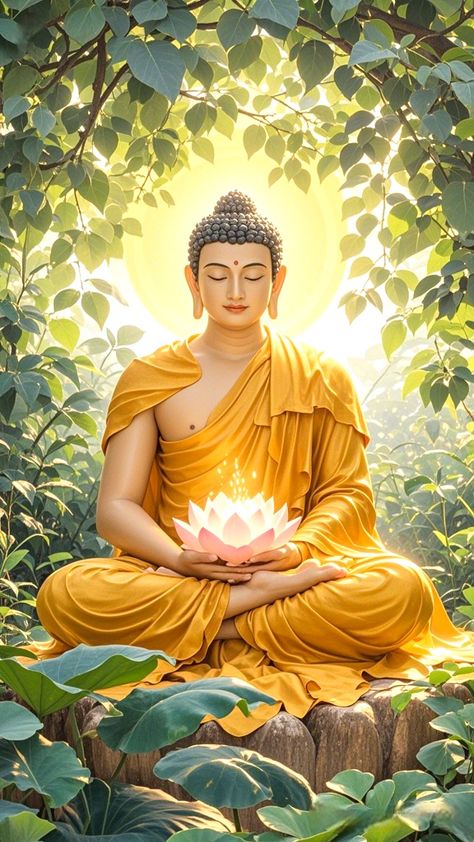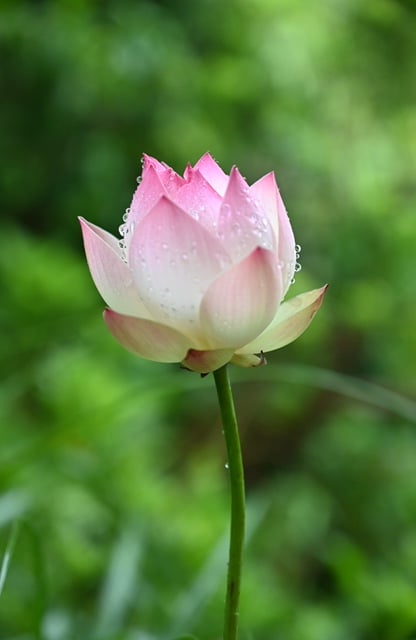Awakening for All; Zazen Life:Awakening Life
Everyone wants to live in peace and happiness, because everyone has stress and suffering – birth, sickness, aging, death, not getting the desired, parting with the beloved, meeting with the hated, the rampant commotion of body, mind, and the world, and now the ticking of the Doomsday Clock, with nuclear catastrophe, etc.
Suffering arises from desire unsatisfied, which fundamentally comes from karma with the triple poisons, unfulfilled by the Dharma of Dependent Co-origination, i.e., all phenomena are dependently originated on limitless causes and conditions, thus nothing is permanent (self-same), ego (self-same), happy (self-satisfying).
The solution, thus, lies in awakening and accepting the Dharma and transcending ego, treading the path of awakening and avoiding the karma of the triple poisons. Anyone can do this by associating those who are walking this path, cultivating and caring for the Dharma with them, awakening in nirvana, stilling karma wind.
Anyone can sit still, which stills all karmas, striving in samadhi, integration, settling in nirvana, seeing the Dharma, saving from the triple poisons, serving for the five/ten precepts, saving and serving all, individually, socially, and ecologically. This is cultivating oneself and others in the triple learnings and the eight holy ways, etc.
January 3, 2025 C.E.
Notes:
1.Four sufferings: birth(jāti)aging(jarā)sickness(byādhi)・death(maraṇa). Eight sufferings:Four sufferings+loved(piya)・unloved(appiya)・desired(yampiccha)・five appropriation aggregates(pañcupādānakkhandhā).
2.“The Dharma (Norm/Law/Truth/Ethic) of all dharmas (forms/phenomena/ truths/ethics)” is Dependent Co-origination, i.e., all phenomena are interdependently co-originated on limitless causes and conditions (similar to the Law of Causality, but deeper and wider – beyond conventions, conceptions, objects, etc.). This means that we are interrelated with other beings (other species, elements, stars, etc.) and relatives to each other, and that we must therefore live together harmoniously and strive to make a wholly wholesome world to become harmonious, healthy, and happy.
3.Karma is instilled with the triple poisons of desire, divisiveness, and delusion (of ego/mei: I/my). The Buddha said that all living beings are karma-birthed, -heirs, -owners, -machines, and -refuged. He clarified that there is no self-substance with self-sameness (permanent) and self-sovereignty (wishful) entities due to the Dharma (Truth/Law) of all dharmas (phenomena), Dependent Co-origination. We as karma-machines must change to the Dharma-refuged in order to change the world in suffering to that in holiness (wholly wholesome: harmonious, healthy, and happy).
4.The five aggregates (pañca-skhandha:form, feeling, ideation, formation, and consciousness) are to further analyze the common two parts of body and mind to critically investigate the latter (feeling, ideation, formation: volition, etc., consciousness). These are all interdependently originating and ceasing (related and relative, thus not independent and eternal). The Buddha advised that we rely on ourselves and the Dharma, not others. This means that we must rely on ourselves, not others carelessly, but we must see and judge for ourselves whether things are true and just. He also advised that we not to follow other a-Dharma (un-true, un-ethical, un-holy, un-effective, etc.) ways (cf. six other ways in his time: accidentalism, fatalism, skepticism, indeterminism, etc.).
5.Impermanence (not self-same), suffering (not self-sovereign), selflessness (no self-entity), are called three marks (of existence) due to the Dharma of Dependent Co-origination従う, the third one is concluded by the previous two.
6.The triple treasures are Buddha, Dharma, Sangha. The Buddha was awakened to the universal truth of the Dependent Co-origination, and the Sangha is the community to follow the Buddha’s Dharma, which included the triple learnings. Sangha are two kinds: local and universal, called that in the four directions, composed of the male/female renunciants and lay followers, observing the five precepts, etc.
7.The triple learnings are morality, integration, and prognosis, which counterpart the triple poisons.
8.The Triple Poisons are desire, divisiveness, and delusion (of a self-same, self-sovereign self). The “Triple Only” are only me, only now, and only money (short-sighted views and actions, which make the wider world worse) , which can be cured by the Triple Learnings of morality, concentration, and prognosis.
9.Sitting still (zazen: sitting meditation) makes one calm and clear, as a bowl settling down makes the water inside of it become calm and clear, reflecting the world. Constant cultivation of still sitting leads to calming (samatha/śamatha) and observation (vipassanā/vipaśyanā), nirvana and awakening (bodhi), witnessing the of truth world (Dhamma/Dharma-dhātu), and becoming the truth body (Dhamma/Dharma-kāya). Anyone can become like a harmonious, cooperating tree (harmonious with elements, giving oxygen, flowers, fruits, building materials, etc.), and truthful tree (both true and tree have the same etymological root of dhṝ, lasting: ten thousand year old tree found in Africa). (cf. Zen koan of a cypress tree in the garden).
一切の為の覚醒:坐禅生活:覚醒生活
誰でも平和で幸福な生活をすることを望む、何故なら誰でもストレスと苦を持っているからー生老病死、求不得、愛別離、怨憎会、心身世界の騒擾が盛んにあり、今や核破局などで世界終末時計が時を刻んでいるから。
苦は欲求が満たされないことから起きるが、それは根本的には、一切現象は無限の原因と条件に依存して起きるから何物も永遠(自己同一)我(自己実体)、幸福(自己主宰:全支配)たり得ない、という縁起の法により満たされない三毒の業に由来する。
解決は、だから、法に目覚め受容し、我を超えて三毒の業に目覚めて避ける道を歩むことにある。誰でもこの道を歩む者達と交わり、彼等と共に法を大切にし修行し、業風を静める涅槃に入って覚醒することによってこれは可能である。
誰でも静かに坐り、業を静め、三昧、統一、に努め、涅槃に安住し、法を見、三毒から救われ、五/十戒に仕え、個人、社会、生態の一切に奉仕し救うことが出来る。これは三学と八聖道で自己と他者が修行することである。
2025共通年1月3日
註:
1.四苦(dukkha):生(jāti)・老(jarā)病(byādhi)・死(maraṇa)、八苦:四苦+愛別離(piya)・怨憎会(appiya)・求不得(yampiccha)・五取蘊(pañcupādānakkhandhā)- 五蘊盛(ごうんじょう)とも言われる。
2.諸法(形態・現象)の法(規則・法則・真理・倫理)は縁起(因縁生起)、即ち、一切現象は無量の直接原因と間接条件により相依生起するということである(因果則に似ているがさらに深く広い-世俗、観念、対象などを超える)。これは私達が他者(多種、要素、星宿など)と相依関係にあることを意味し、相互に相対的であり、私達が調和、健康、幸福になる為には共に調和して生き、全体健全な世界を作る努力をしなければならないことを意味する。
3.業は貪瞋(エゴ/メイ:我/我所の)痴の三毒が植え込まれている。ブッダ(覚者)は一切衆生は業—誕生者、—相続者、—所有者、—機械、—依拠者であると言った。彼は、諸法(現象)の法(真理/倫理)である縁起の故に自己同一(永住)と自己主宰(意欲通り)の実態をもった自己物質は存在しないことを明らかにした。業—機械である私達は、苦しむ世界を聖(全体健全:調和、健康、幸福)なる世界に変える為には、法₋依拠者にならなければならない。
4.(色:色形:身、受:感受、想:思想、行:行動、識:意識:心)の五蘊(集合体)は普通の身心二分法を更に分析し後者(受想行識)を批判的に検討する為のものである。これらは全て相互依存して生起、消滅する(相関相対だから独立でも恒常でもない)。仏陀は自らと法に依り、他に依るなと忠告した。これは、私達が自らに頼り、他に不注意に頼ってはならないと言う事であり、物事を真実で正義であるかを自ら見て判断しなければならないということである。彼は又他の不法(非真実、非倫理、非聖性、非効果など)に従わないよう忠告した(参考:同時代の六師外道:偶然論、運命論、懐疑論、非決定など)。
5.縁起の法の故に無常(常に自己同一ということは無い)苦(思い通りになる自己主宰は無い)無我(自己実体は無い)は(存在の)三相と言われるが、第三は前二者から帰結される。
6.三宝は仏法僧である。ブッダは縁起の普遍法に目覚め、僧(僧伽)はブッダの三学を含む法に従う共同体である。僧は地方と普遍(四方僧と呼ばれる)の二種であり、五戒などを守る男女出家者と在家者よりなる。
7.三学は三毒を対治する戒定慧である。
8.三毒は貪瞋痴(自己同一、自己主宰の我という愚痴)である。三だけは今だけ、金だけで自分だけということであり(短見・短絡行動で、より広い世界を悪化させる)が、戒定慧の三学はこれらを治癒できる。
9. 静坐は、椀が安住するとその中の水が静謐に透明になり世界を映すように、人を静謐に明澄にする。静坐の常時の修行は止(止静)(samatha/śamatha) と観(観法) (vipassanā/vipaśyanā), 涅槃と覚醒 (bodhi), に導き法界 (Dhamma/Dharma-dhātu:真理世界)を直証し,法身 (Dhamma/Dharma-kāya:真実人身)になる。誰でも、調和協働している樹(一切元素と調和し酸素、花、果、建築材などを提供する)、だから真実である樹(true/tree両者共法:dharmaの語根 dhṝと同様永続を意味し:一万年生き延びる樹もある)の様に成れる (参考:禅公按:庭前柏樹子)。
.
.
.
.
.

.
.
.
.

.
.
.
.

.
.
.
.

.
.
.



















